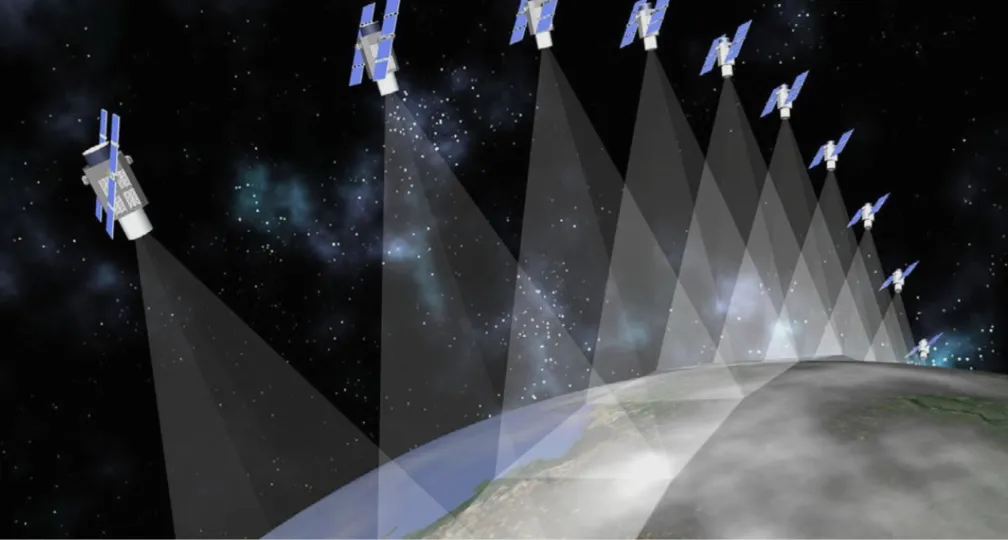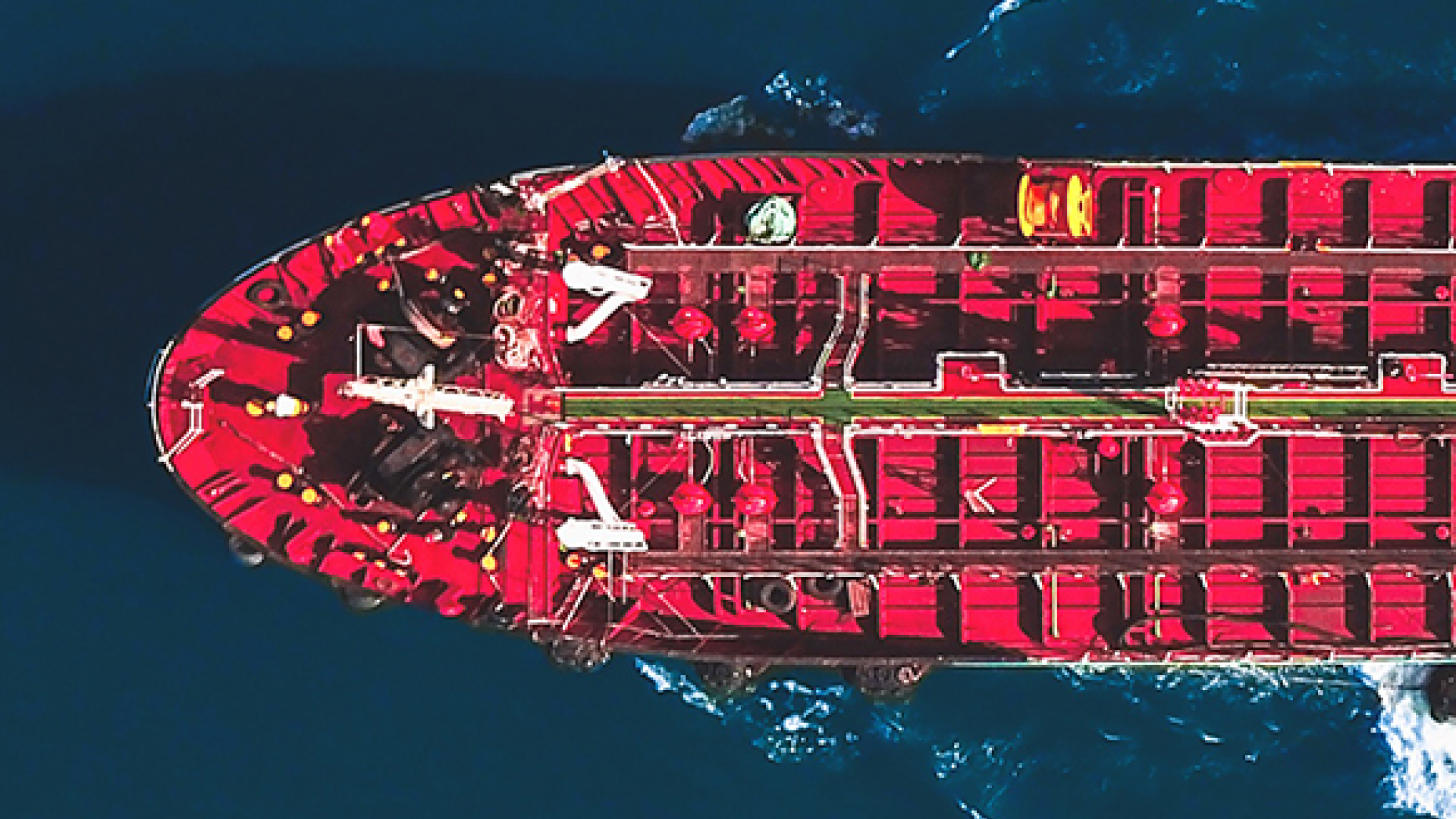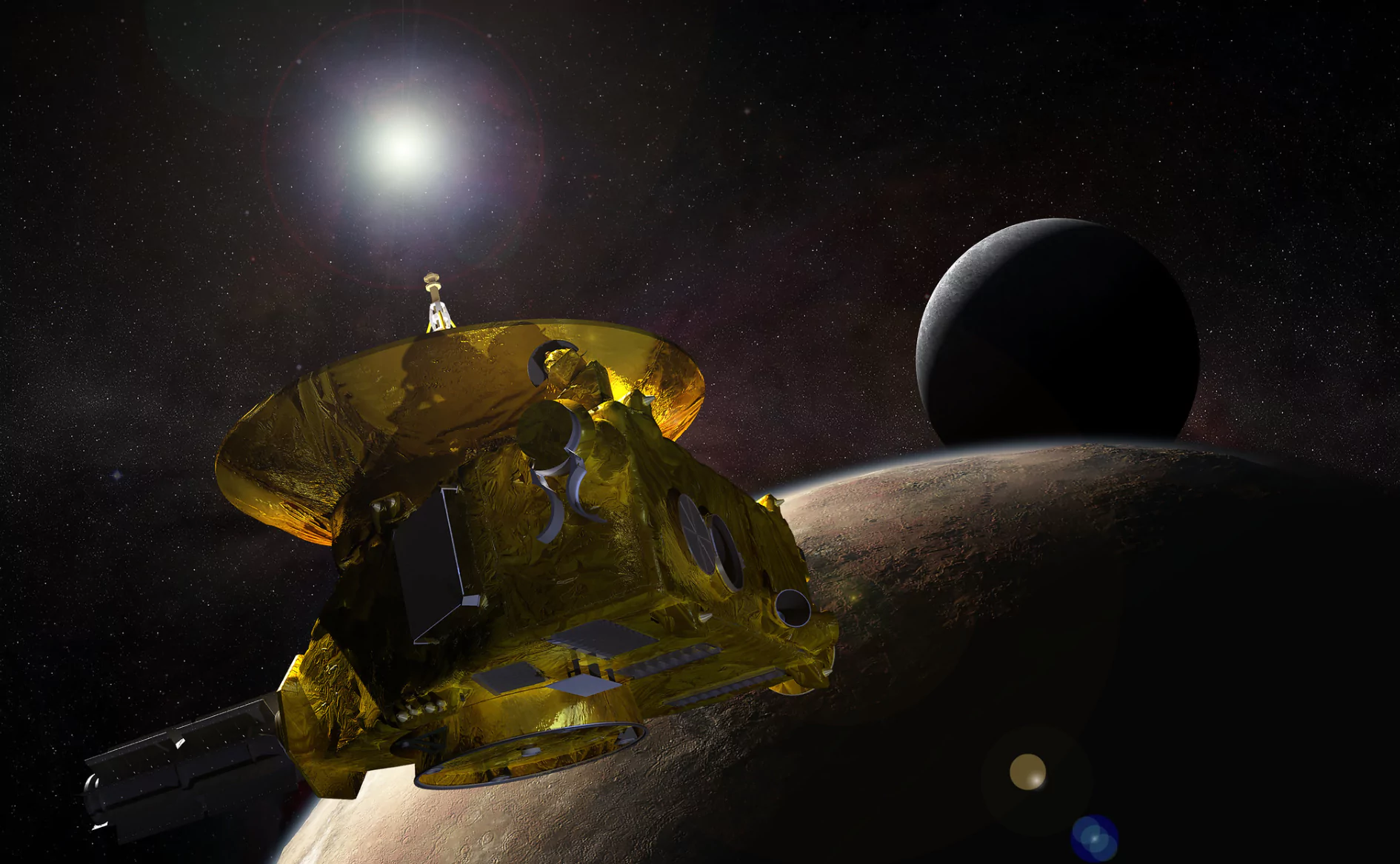Satellite constellations taking on greater role in Japan’s security

The service, a type of satellite constellation — a group of artificial satellites operated as a single system — has attracted great attention in the ongoing war.
However, the use of satellite constellations is not limited to the Ukrainian government. The U.S. military has begun shifting its space system architecture to satellite constellations.
Japan’s Defense Ministry and Self-Defense Forces have also been conducting demonstration experiments for the use of Starlink satellites since March.
But what exactly is a satellite constellation, how can it be made use of and what kind of impact can it have on a country’s national security strategy?
Satellite constellations
Since the beginning of the space age up until recently, the main focus for space system development has been how to improve the capabilities of individual satellites. In the space age, the priority had been to develop larger satellites with higher abilities.
However, since the 2000s, with the technological advance of electronic parts, smaller and lower-cost satellites began to be developed and used, particularly in the commercial space sector.
In the United States, along with the rise of space startups, large-scale satellite constellation projects were announced one after another from around 2015 to launch hundreds and thousands of small satellites into low-Earth orbit — generally at an altitude of less than 1,000 kilometers — to function as constellations providing telecommunications and Earth observation services.
OneWeb and SpaceX planned to launch 648 and 4,000 small satellites, respectively, to offer internet services worldwide. SpaceX later named its satellite constellation Starlink.
The firms said that the merits of their satellite constellation projects are their low-latency networks and worldwide telecommunication service.
Traditional communication satellites are usually placed on a geostationary orbit at an altitude of roughly 36,000 km.
As satellites in such orbit always move at the same speed as the Earth rotates, it is possible for a satellite to provide telecommunication services constantly in one area of the planet.
But because the satellites are located so far from the Earth, propagation delay has been an issue.
Therefore, the problem can be solved if satellites are positioned in low-Earth orbit at an altitude of less than 1,000 km.
On the other hand, satellites in low-Earth orbit have had the issue of being able to cover one area only for a short period of time. Large-scale satellite constellation projects have sought to clear this problem through the simultaneous operation of a large number of satellites.
While earthshaking changes have been seen in the commercial space industry in the U.S. with various large-scale satellite constellation projects being announced, including both telecommunication and Earth observation data gathering services, different types of changes have been taking place in the military space sector.
Space as a warfare domain
The military use of space systems is not necessarily new, as the use of reconnaissance satellites has been available since the early stages of the Cold War.
However, since the Gulf War, the U.S. military has vastly expanded its use of space systems on a tactical level, such as using the GPS satellite for cruise missiles navigation and satellite communication for drone operations. Today, space systems have become an essential part of the U.S. military operations.
In the meantime, since the 2000s, as geopolitical confrontations between Western countries, such as the U.S., and countries like China and Russia began to deepen again, Beijing and Moscow began to take aim at the space systems that the U.S. military had been increasingly dependent upon operationally.
In 2007, China launched a missile from the ground to destroy its own aging weather satellite in low-Earth orbit. In addition, it has also been often reported that China and Russia are stepping up their abilities to attack other countries’ space systems, developing and testing ground-based laser weapons and satellites to approach other countries’ satellites in orbits.
Under such circumstances, since the mid-2010s, Washington came to be strongly aware of threats in the space domain, and designated space as a warfare domain for the first time in its National Defense Strategy released in 2018.
The U.S. Department of Defense prioritized enhancing the resilience of its space systems.
Resilience refers to the capability to provide necessary functions for troops to successfully conduct missions even when hostile behaviors arise.
Ways to boost space systems’ resilience include hardening satellites themselves against kinetic and nonkinetic attacks, distributing functions of satellites and proliferating them to increase redundancy.
However, the U.S. military’s space systems in the mid-2010s had been developed and operated based on the benign environment of the past and could hardly be regarded as resilient, and were described in 2017 by General John Hyten, then-head of U.S. Strategic Command, as “large, big, fat, juicy targets.”
Space Development Agency
Innovative proposals to solve the issue were made by the U.S. Space Development Agency (SDA) established in March 2019.
The SDA, created under the Office of the Secretary of Defense, capitalizes on a unique business model to deliver space-based capabilities as quickly as possible by setting procurement requirements based on existing commercial technologies, rather than on traditional space-system development models.
The agency proposed building a large-scale constellation of several hundred small satellites in low orbit to provide the U.S. military with functions such as telecommunications, and ballistic missile detection and tracking systems.
If such a system is realized, even if multiple satellites become dysfunctional due to kinetic attacks or jamming, the functions of the entire system can be maintained by the remaining satellites, making the space system more resilient.
OneWeb and Starlink demonstration satellites started to be launched in 2019, the same year as the SDA was established. The SDA must have moved to adopt new concepts of the commercial space industry in a timely manner and utilize them in the military space sector.
Meanwhile, the SDA is working to construct satellite constellations as a government system rather than simply procuring commercial services, apparently because of the U.S. military’s specific requirements and other factors that must be controlled by the government.
In October 2022, the SDA became a part of the Space Force tasked with providing space capabilities to the U.S. military, but it maintains a certain independence in carrying forward projects.
In line with said projects, the U.S. Space Force’s space-systems architecture is shifting its focus from conventional large satellites to the SDA’s satellite constellations.
Japan’s defense strategy
Amid such a shift in the U.S., satellite constellations are attracting attention in Japan as well.
The government’s first Space Security Initiative, adopted in June, proposes the use of satellite constellations to strengthen communications and information gathering.
The government is believed to have recognized that the use of space systems, including satellite constellations, is an indispensable tool to achieve one of the goals of its National Security Strategy adopted in December, which is to “reinforce its defense capabilities to the point at which it will be possible to disrupt and defeat invasions against its nation much earlier and at a further distance.”
For instance, the strategy document states the need to build standoff defense capabilities — the capability to strike adversarial invasion forces by using standoff weapons, weapons launched at a long distance from the target to avoid defensive fire from the target area, from outside the range of the adversary’s attack.
Satellite constellations can provide fundamental features for such capability — identifying targets at a distance and obtaining information on their locations frequently, gathering information quickly following attacks to assess the damage dealt to targets, and enabling high-speed and redundant communication among assets deployed over wide areas, including cruise missiles — at levels which had not been possible before.
Regarding the frequency of information gathering in particular, satellite constellations offer incomparably higher capability than previous space systems due to their large number of satellites.
However, space systems, including satellite constellations, do not cover all the functions needed for terrestrial operations.
What is important is how specifically Japan can plan a concept for operating terrestrial missions and come up with requirements for space systems as a part of the overall concept.
Challenges
There will be a number of challenges for the Japanese government when adopting satellite constellations, including securing opportunities for frequent launches, uncertainties over the overall costs, and controlling large-scale constellations and processing data, as well as concerns over the creation of space debris.
There are also other issues, such as how much commercial services should be used by the government, to what degree the constellations should be built as the government’s system, and how to establish interoperability and role-sharing with allies and partner countries like the U.S.
But if the Defense Ministry and the SDF intend to expand their theater of operations to a greater distance, satellite constellations can provide extremely useful capabilities, making their use unavoidable.
Japan therefore urgently needs to cope with the issues and challenges to utilize the new system and draft specific operation concepts for each of the capabilities advocated in its National Security Strategy.
(Photo Credit: Ministry of Defence)

Geoeconomic Briefing
Geoeconomic Briefing is a series featuring researchers at the IOG focused on Japan’s challenges in that field. It also provides analyses of the state of the world and trade risks, as well as technological and industrial structures (Editor-in-chief: Dr. Kazuto Suzuki, Director, Institute of Geoeconomics (IOG); Professor, The University of Tokyo).
Disclaimer: The opinions expressed in Geoeconomic Briefing do not necessarily reflect those of the International House of Japan, Asia Pacific Initiative (API), the Institute of Geoeconomics (IOG) or any other organizations to which the author belongs.


Research Fellow
Kota Umeda is a research fellow at the Institute of Geoeconomics at the International House of Japan. From 2015 to 2025, he worked at the Japan Aerospace Exploration Agency (JAXA), where he focused on researching U.S. space policy, coordinating with other space agencies, and developing JAXA's cybersecurity policy and incident response strategies. From 2019 to 2022, Mr. Umeda served as JAXA's liaison officer in Washington, D.C., collaborating with the U.S. government, industry leaders, and various stakeholders to promote Japan-U.S. space cooperation. Prior to his career in the space sector, Mr. Umeda spent five years at the Japan Ministry of Defense, where he researched military activities surrounding Japan and contributed to the formulation of arms control and disarmament policies. He holds a Master of Laws from Kyoto University and a Bachelor's degree in Policy Studies from Kwansei Gakuin University.
View Profile-
 Japan-India Defense in a Fragmenting Indo-Pacific2025.12.10
Japan-India Defense in a Fragmenting Indo-Pacific2025.12.10 -
 The “Economic Security is National Security” Strategy2025.12.09
The “Economic Security is National Security” Strategy2025.12.09 -
 India - Japan: The Glimpse of a Shared Vision2025.12.05
India - Japan: The Glimpse of a Shared Vision2025.12.05 -
 Beijing’s ‘Globalist’ Agenda Under Trump 2.02025.12.01
Beijing’s ‘Globalist’ Agenda Under Trump 2.02025.12.01 -
 Trump’s Tariffs Might Be Here to Stay – No Matter Who’s in Power2025.11.28
Trump’s Tariffs Might Be Here to Stay – No Matter Who’s in Power2025.11.28
 Event Report: The Trump Tariffs and Their Impact on the Japanese Economy2025.11.25
Event Report: The Trump Tariffs and Their Impact on the Japanese Economy2025.11.25 The Real Significance of Trump’s Asia Trip2025.11.14
The Real Significance of Trump’s Asia Trip2025.11.14 The “Economic Security is National Security” Strategy2025.12.09
The “Economic Security is National Security” Strategy2025.12.09 The long road to a South Korea-U.S. trade deal2025.11.26
The long road to a South Korea-U.S. trade deal2025.11.26 India’s Structural Reforms: Opportunities and Risks2025.11.14
India’s Structural Reforms: Opportunities and Risks2025.11.14
















